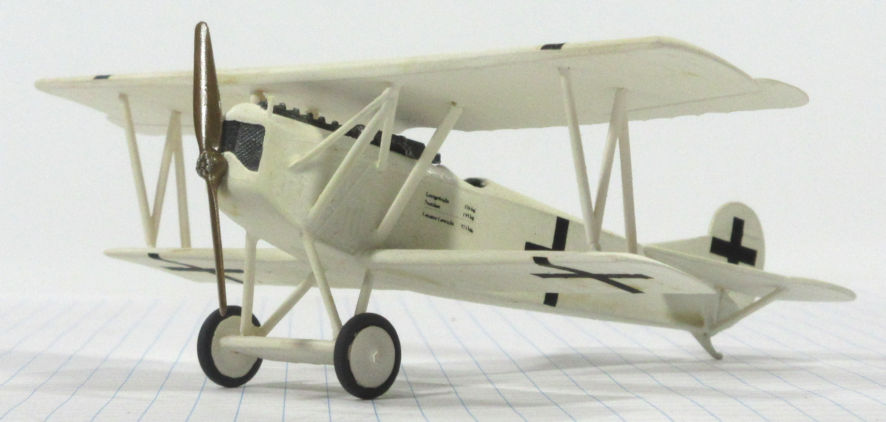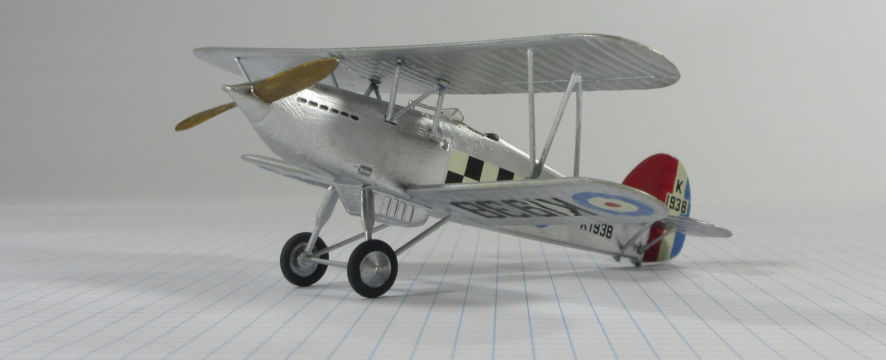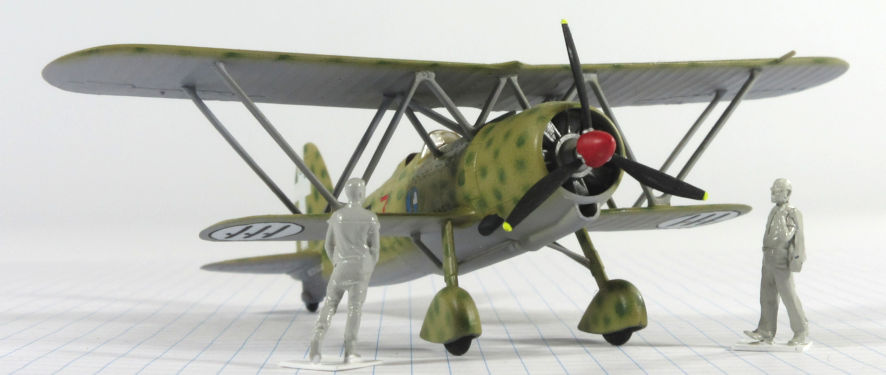Biplane fighters
Fokker D.VII – Hawker Fury – Fiat CR.42
Even into the 1930s almost all fighter aircraft were biplanes, but things have changed a lot since then. We now have more than a hundred fighters in our collection but only a handful of them are biplanes. Let’s have a look at three of them.
Fokker D.VII in 1/72 by Revell
The Fokker D.VII was the ultimate German fighter of World War I. It offered excellent performance but was easy and safe to fly turning, as one person said, ordinary pilots into good pilots and good pilots into Aces. They began entering service in early May 1918 and eventually equipped 46 Jagdstaffeln with 775 in service when the war ended. The Treaty of Versailles forced Germany to hand its Fokker D.VIIs to the allies and they subsequently flew with many air forces.
Fokker D.VIIs flew in many colourful schemes but this model represents the Fokker D.VII flown by Herman Goring when he was the commander of Jagdeschwader 1. I made it because he had his painted white all over, and that made life easy for me. Indeed, Revell made life easy for all modellers because this was the only scheme offered when this Revell 1/72 kit was first published in 1963 and it was, how shall we say, good for its time. There was also a Nichimo kit that was later issued by Esci. More recent is the Roden kit which is quite an improvement and which I quite like. More recently Eduard published their kit of this aircraft in 2019 which is now available in a range of versions and colours. That’s the one to go for, judging by Eduard’s reputation alone.
Hawker Fury in 1/72 by Matchbox
The Hawker Fury was a delightful little fighter designed at the beginning of the 1930s. It had excellent flying qualities and was the first RAF aircraft capable of flying faster then 200 miles an hour. Due to cutback during the Great Depression only 262 were manufactured, the majority of them flying with the Royal Air Force. Others flew in the air forces of Persia, South Africa, Yugoslavia, Portugal and Spain. They were withdrawn from RAF service in 1939 but other air forces flew them a bit longer.
This model was made from the Matchbox 1/72 kit which was first published in 1972. It was reissued in a Revell box in 2010 so it is probably still readily available. It is a simple and elegant kit to assemble and will cause no problems apart from the rigging, which is always a chore, if you like to do that sort of thing. After all these years the only competition is the Amodels kit which was published in 2010 in versions with Yugoslav, Spanish and British markings. I tried to assemble the Amodels kit of the Hawker Demon – basically a two seat version of the Fury – and ended up throwing it in the bin for being too difficult to make, so it looks like the Revell kit is still the best option after all these years.
Fiat CR.42 in 1/72 by Revell/Matchbox
The Fiat CR.42 was among the last generation of biplane fighters, being developed from the earlier Fiat CR.32 but fitted with a more powerful radial engine. It was strong and highly manoeuvrable with a speed of 270mph (434km/h) but only lightly armed, in the tradition of most biplane fighters. They began entering service with the Italian air force in 1939 and served in many roles up until the Italian surrender in 1943.
This model was made by Steve Pulbrook from the Matchbox (Revell) 1/72 kit that was first published in 1965 and has been reissued many times since. It is not a bad kit but lacks the complexity and detail of much more modern kits. Matchbox reissued the kit in 1994, Pavla published their version in 2004 and Italeri published their version in 2006. Hyperscale gave it a very positive review and who’s going to argue with that – though there are still lots of the old Revell/Matchbox kit floating around and you could probably pick one up for a very good price.


